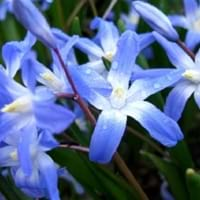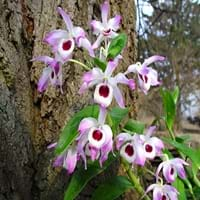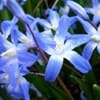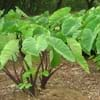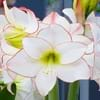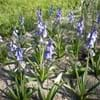Life Span
Perennial
Perennial
Type
Bulb or Corm or Tuber
Epiphyte
Origin
Mediterranean, Turkey
Eastern Asia, Southern Asia, Southeastern Asia, India, Nepal, China
Types
Pale glory-of-the-snow , Cretan glory-of-the-snow , Forbes' glory-of-the-snow , Loch's glory-of-the-snow
Not available
Habitat
Mediterranean region
Deciduous forests, Woodlands
USDA Hardiness Zone
3-9
11-12
Habit
Clump-Forming
Clump-Forming
Flower Color
White, Blue, Pink, Violet
White, Purple, Pink, Burgundy, Dark Red, Ivory
Flower Color Modifier
Bicolor
Multi-Color
Fruit Color
Not Available
Non Fruiting Plant
Leaf Color in Spring
Green
Green
Leaf Color in Summer
Light Green
Green
Leaf Color in Fall
Several shades of Green
Green
Leaf Color in Winter
Light Green
Not Available
Leaf Shape
Long Linear
Lance shaped
Plant Season
Spring, Winter
Spring, Summer, Fall, Winter
Sunlight
Full Sun, Partial Sun
Partial Sun, Partial shade
Type of Soil
Loam
Not Available
The pH of Soil
Acidic, Neutral, Alkaline
Acidic, Neutral
Soil Drainage
Well drained
Well drained
Bloom Time
Early Spring, Late Winter
Early Spring, Spring, Late Winter, Indeterminate
Tolerances
Drought
Cold climate, Not Available
Where to Plant?
Ground, Pot
Container, Ground, Pot
How to Plant?
Divison, Seedlings
Cuttings, From bulbs, Rhizome division
Plant Maintenance
Medium
Medium
Watering Requirements
Medium
Do Not over Water, Keep ground moist, Requires watering in the growing season
In Summer
Lots of watering
Lots of watering
In Spring
Moderate
Moderate
In Winter
Average Water
Average Water
Soil pH
Acidic, Neutral, Alkaline
Acidic, Neutral
Soil Type
Loam
Not Available
Soil Drainage Capacity
Well drained
Well drained
Sun Exposure
Full Sun, Partial Sun
Partial Sun, Partial shade
Pruning
Remove damaged leaves, Remove dead branches, Remove dead leaves
Cut leaves after fall, Prune in flowering season
Fertilizers
All-Purpose Liquid Fertilizer
Fertilize in early to mid-summer, Fertilzer with low nitrogen content
Pests and Diseases
Pests and diseases free
Red spider mite, Watery soft rot
Plant Tolerance
Deer resistant, Drought
Cold climate
Flower Petal Number
Single
Single
Foliage Texture
Fine
Medium
Foliage Sheen
Matte
Matte
Attracts
Butterflies
Not Available
Allergy
Unknown
convulsions, Dermatitis, Toxic
Aesthetic Uses
along a porch, deck or patio, Cottage Garden, Mixed Border, Showy Purposes
Beautification, Decorating walls, Hanging Basket, Used as an interior landscaping species, Used for decorating walls, fences, gates, hedges, etc.
Beauty Benefits
Not Available
Glowing Skin, Perfumes, Provides herbal hair care, Skin cleanser
Environmental Uses
Air purification
Food for animals, Food for birds
Medicinal Uses
Unknown
Analgesic, Antipyretic, Diabetes, Digestion problems, Eye Problems, Gallbladder Diseases, Liver Protection
Part of Plant Used
Not Available
Whole plant
Other Uses
Unknown
For making oil for cosmetics, Use in Chinese herbology, Used as Ornamental plant
Used As Indoor Plant
No
Yes
Used As Outdoor Plant
Yes
Yes
Garden Design
Alpine, Container, Foundation, Lawns and Turf, Mixed Border, Rock Garden / Wall, Wildflower
Container, Hanging Basket, Houseplant, Rock Garden / Wall, Tropical
Botanical Name
CHIONODOXA
DENDROBIUM nobile
Common Name
Chionodoxa, Glory-of-the-Snow
Dendrobium, Noble Dendrobium, Sentinel Orchid
In Hindi
Chionodoxa
Noble Dendrobium
In German
Ruhm des Schnees
Noble Dendrobium
In French
gloire de la neige
Dendrobium nobile
In Spanish
gloria de la nieve
Dendrobium nobile
In Greek
glory-of-the-snow
Dendrobium nobile
In Portuguese
glória da neve
Nobile Dendrobium
In Polish
chwała śniegu
Dendrobium szlachetne
In Latin
glory of the snow
Nobile Dendrobium
Phylum
Vascular plant
Tracheophyta
Class
Liliopsida
Equisetopsida
Order
Asparagales
Asparagales
Family
Liliaceae
Orchidaceae
Genus
Chionodoxa
Dendrobium
Clade
Angiosperms, Monocots
Angiosperms, Monocots
Tribe
Not Available
Dendrobieae
Subfamily
Scilloideae
Epidendroideae
Importance of Glory of the Snow and Nobile Dendrobium
Want to have the most appropriate plant for your garden? You might want to know the importance of Glory of the Snow and Nobile Dendrobium. Basically, these two plants vary in many aspects. Compare Glory of the Snow and Nobile Dendrobium as they differ in many characteristics such as their life, care, benefits, facts, etc. Every gardener must at least have the slightest clue about the plants he wants to plant in his garden. Compare their benefits, which differ in many ways like facts and uses. The medicinal use of Glory of the Snow is Unknown whereas of Nobile Dendrobium is Analgesic, Antipyretic, Diabetes, Digestion problems, Eye Problems, Gallbladder Diseases and Liver Protection. Glory of the Snow has beauty benefits as follows: Not Available while Nobile Dendrobium has beauty benefits as follows: Not Available.
Compare Facts of Glory of the Snow vs Nobile Dendrobium
How to choose the best garden plant for your garden depending upon its facts? Here garden plant comparison will help you to solve this query. Compare the facts of Glory of the Snow vs Nobile Dendrobium and know which one to choose. As garden plants have benefits and other uses, allergy is also a major drawback of plants for some people. Allergic reactions of Glory of the Snow are Unknown whereas of Nobile Dendrobium have convulsions, Dermatitis and Toxic respectively. Having a fruit bearing plant in your garden can be a plus point of your garden. Glory of the Snow has no showy fruits and Nobile Dendrobium has no showy fruits. Also Glory of the Snow is not flowering and Nobile Dendrobium is flowering. You can compare Glory of the Snow and Nobile Dendrobium facts and facts of other plants too.
